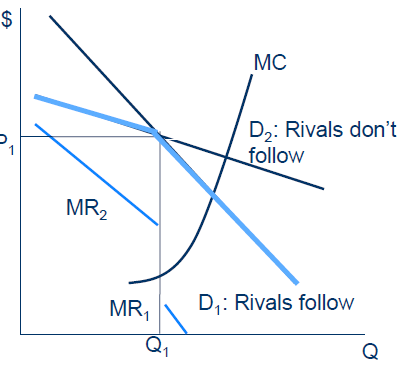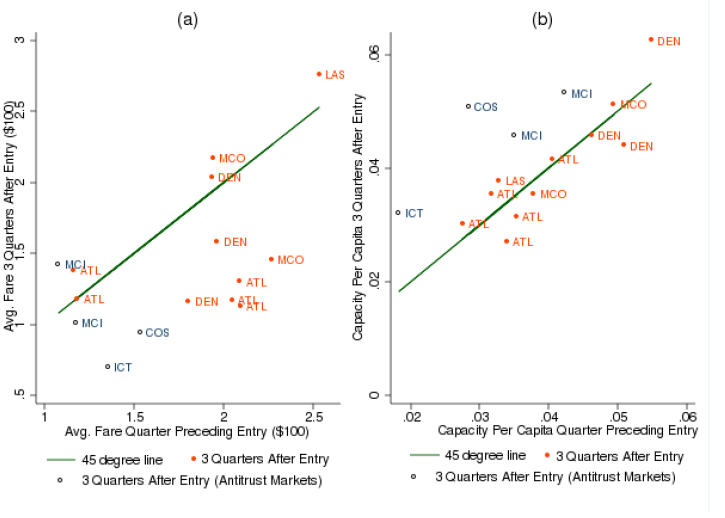In a non-collusive oligopoly, firms often try their best to avoid price-based competition. An increase in the prices by one of the firms may not be followed by a similar reaction from competitors, although a decrease in prices would lead to price reductions by other firms.
This is explained by the kinked demand curve model under which a firm can maximise its profit. When the firm increased the price from P1 and others did not follow, the demand was D1, meaning that the price was kinked at P1 and the firm faced a more elastic demand than its competition in the market.

The failure of other firms to match its increase in prices resulted in a more elastic demand curve for American airlines. However, because it could afford to, it provided very attractive discounts, which ultimately resulted in more customers from rival airlines being attracted.
This is can be described under predatory pricing, where a firm lowers prices considerably, especially below cost to prevent others from doing the same. For a firm to do this, it must have the wherewithal to withstand the losses that may occur and evidently American airlines firm was cushioned against that by its huge capital reserves.

In 2008, the economy slowed down due to the recession and the demand for air travel followed suit. However, the carriers managed to keep up their pricing capacity for most of the year until September as demonstrated in the red line. There was actually a level of growth in 2008.
After this, there was a dramatic increase in the level of crisis and as major financial institutions went under. In fact, it was observed that the stock market nearly collapsed. Corporations reduced travel expenses significantly. This firm was left in a condition where its ability to match prices and capacity was diminished.

During the recession, airlines were forced to reduce their fares considerably to increase the number of passengers. As a result of flights being much cheaper during that period, more people opted to fly domestically.
However, it was more difficult to do the same because not all countries were affected by the recession in the same way as the US. As a result, it was competing with international airlines that could have matched its reduced prices. Thus, it was not able to reduce the prices low enough to increase the demand for international flights. This negatively impacted the performance of the firm.